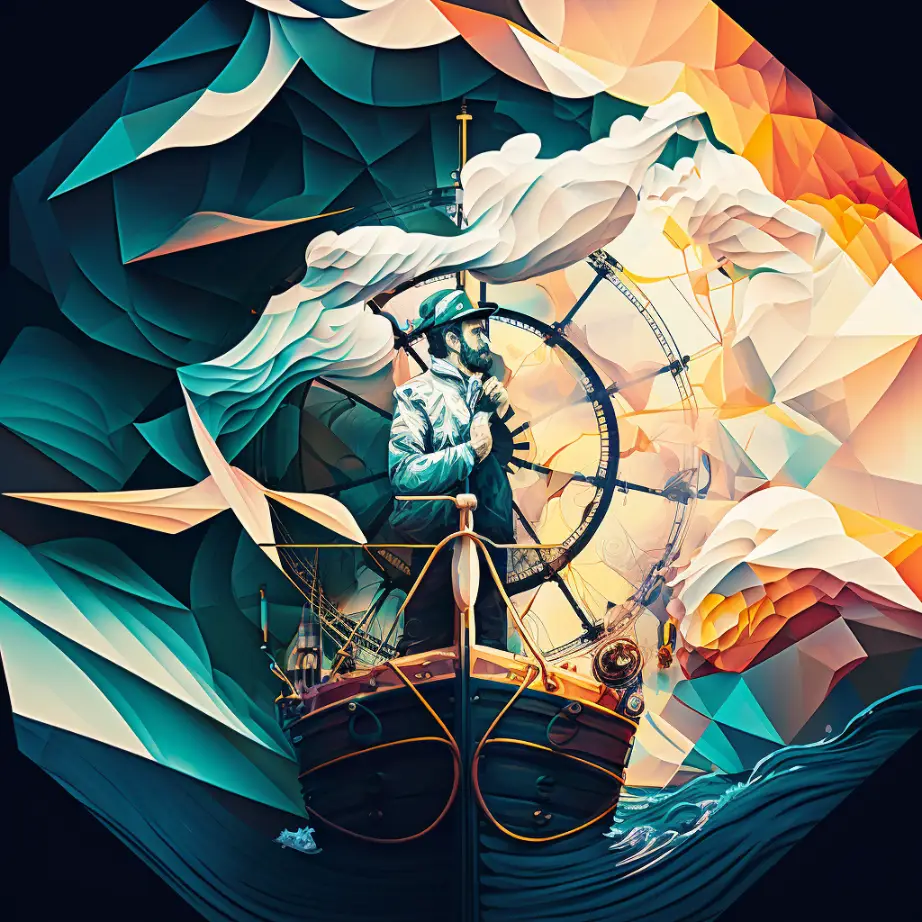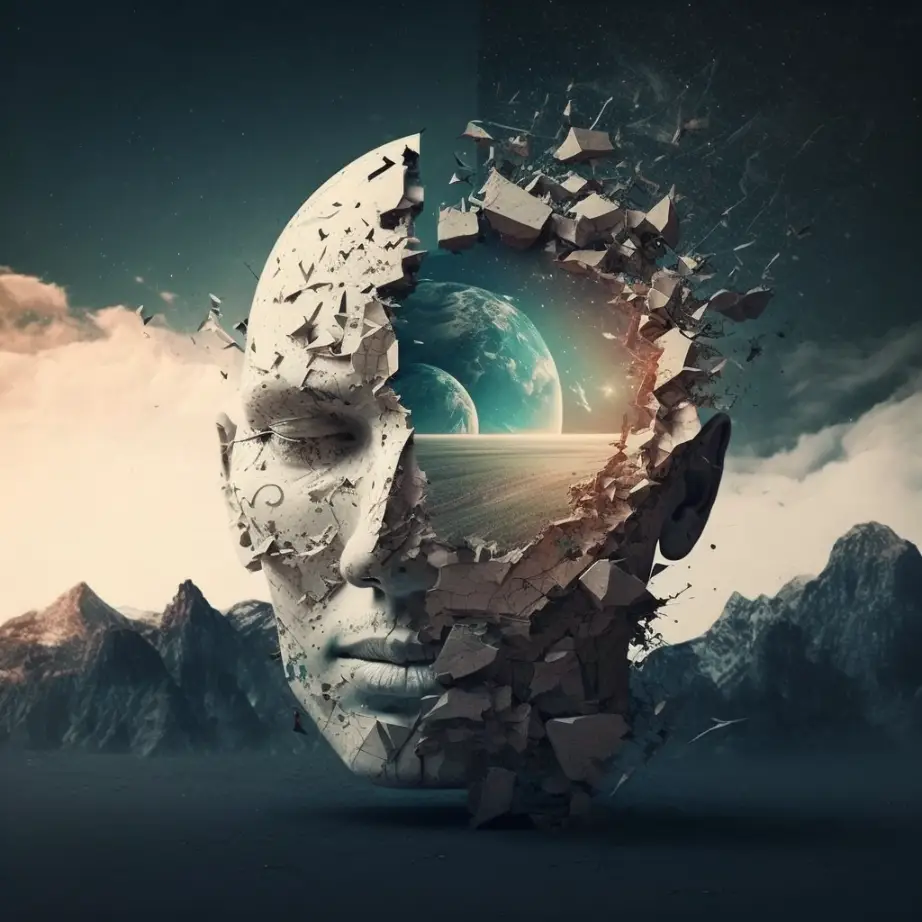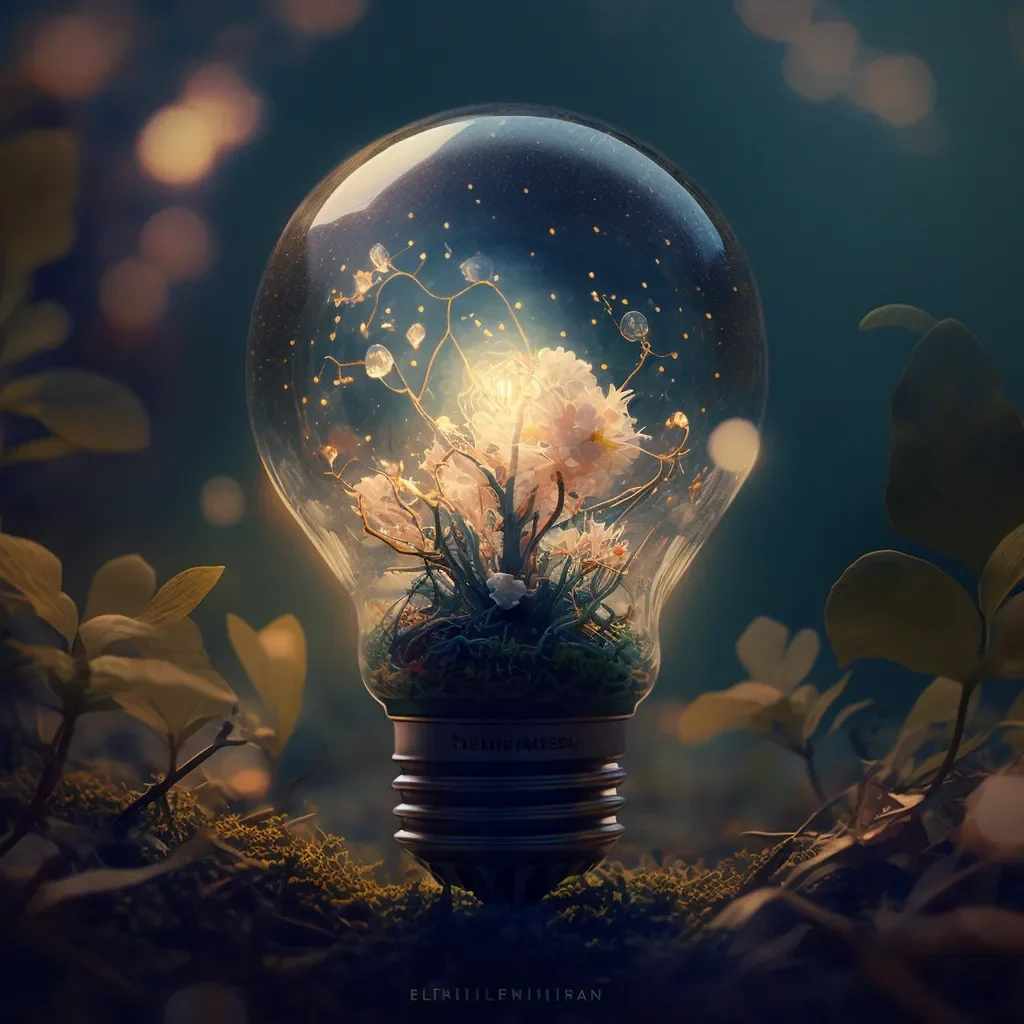Psychedelic “Bad Trip”:
The Paradoxical Dark Side of Psychedelics
A deep look at the “bad trip”, the dread of ego dissolution, the hard trip vs true bad trip, and how to reduce risk.
Chapter 2: What are Psychedelics?
Psychedelics 101 Series
Understanding the Fundamentals of Psychedelics
Estimated reading time: 14 min
July 29, 2023
In the previous article, we took a peek into the psychedelic mind. In this last article of Chapter 2 of the Psychedelics 101 series, we will dive into the potentially dark aspect of the psychedelic experience. The psychedelic bad trip. Understanding the bad trip will prove critical in reducing the risk and getting the most out of a psychedelic experience.
The Paradox of the Psychedelic "bad trip"
If the dissolution of boundaries that psychedelics foster are that powerful and revealing, why do “bad trips” exist? What is a “bad trip”? And why is it completely natural to fear the dissolution of boundaries?

The dread of ego dissolution
The Oxford dictionary definition of “dread”:
1. Anticipate with great apprehension or fear.
2. Regard with great awe or reverence.
The dread of ego dissolution is almost inevitable in the psychedelic experience. The question is towards which direction the dread is directed. Apprehension and fear or embrace and reverence?
1. Anticipating ego dissolution with apprehension and fear causes the “bad trip”.
2. Embrace ego dissolution with reverence and awe and the unpleasant experience will no longer persist.
The paradox of the “bad trip” is that the dissolution of boundaries is exactly what opens the doors to deeper understanding and at the same time is what we fear the most and causes the resistance which steers us into the “bad trip”. Now, we delve into what it’s like to be in a “bad trip”.
The principles of responsible psychedelic use are what enables us to surrender and open up to the experience.
Picture a “bad trip” as a ship approaching rough waters and a storm at sea. Even though the sail may start off smoothly, on a sunny day, a sailor can be surprised by unexpected and challenging conditions [1]. The dissolution of boundaries may cause the tossing and turning of the ship in the storm, leaving the sailor in distress, struggling for a solution to what is perceived as the problem. Feelings of fear, anxiety, insanity, confusion, isolation and paranoia and the sensation of losing control can come in varying degrees of intensity, depending on how the sailor is able to navigate the rough waters [2].
Helen, an interviewee in a study spoke about her “bad trip” with the psychedelic LSD. At a point in the experience, she was not able to understand how to do ordinary daily activities such as eating and urinating. She also reported having had an “out of body” experience; she was convinced that she had choked herself to death [3a]:
I was lying in a hammock in my sleeping bag and watching the zipper on the bag. Then it started to look like DNA symbols (…) I thought, ‘Did I die now? Maybe I choked and now I’m dead. I’ve killed myself because I haven’t had enough air to breathe’. Then I remember that I had to pee, or rather, I had to do something called ‘peeing’. However, I didn’t know what that was or how to do it, so [name of boyfriend] helped me, and I had to ask like how to do everything (…) We had some blueberry muffins, and I watched and had to observe how he put it in his mouth. With all such daily things it was like that, like I was a little kid and I couldn’t do anything.
The paradox of the “bad trip” is that the dissolution of boundaries is exactly what opens the doors to deeper understanding and at the same time is what we fear the most and causes the resistance which steers us into the “bad trip”. Now, we delve into what it’s like to be in a “bad trip”.
Gashi et al. (2021) [3b] identified the key feature of a bad trip to be the feeling of losing oneself or going crazy, phenomena that might be associated during “dissolution of the self”.
A key reason for having a bad trip was that you resisted following the path that the psychedelic substance “wanted to take you”, meaning that you had defensively struggled against the insights you were offered. Several participants worded this as “psychedelics don’t take you where you want to go, but where you need to go”. Adrian, in his late twenties, echoed this idea when he reflected on a trip he had had on LSD:
I think that you learn a lot from these [bad] trips. When you’re in such situations, you learn that you have to just go with the flow and not fight back. Even though you fight against it for a couple of hours, and experience a lot of pain because of it, I think that (…) well, even if it was intense and really scary for me, I really see the value of it.
When Helen reflects upon her experience of losing control over the body she says:
In the following three weeks, I woke up each morning so happy just to be alive. I felt that I had been given a gift, that I was allowed to live, that I can take trips in the nature, that I have so many good people around me. I just felt so extremely lucky. I don’t think that I would experience this feeling if it weren’t for the extreme distress that I experienced.
A different study found that high doses of psilocybin caused strong fear at some point in the experience in 30% of the participants, yet 80% of them reported improvement in well-being [4]. Another group of researchers found that 39% rated their “worst bad trip” among the five most challenging experiences of their lifetime. Interestingly, the degree of difficulty was positively associated with enduring increases in well-being [5].
“No, I don’t look at it as a bad trip, because it’s like (…) the bad trips are what gives you the most insights. It’s this [bad] trip that shows you some sides of yourself that you perhaps have tried to diminish, that probably are the most important ones to understand. [These are insights] about who you really are, who you have been, what you’ve done, right. You have to see your flaws to be able to work through stuff.” [3b]
That’s why we used the term “bad trip” in quotes. Unpleasant experiences during bad trips can be beneficial and revealing deep existential and life-altering insights.
The Hard Trip & the True Psychedelic Bad Trip
Not all “bad trips” end up being psychospiritually beneficial. James Jesso, in his book “Decomposing the Shadow: lessons from the psilocybin mushroom”, distinguishes between a hard (or challenging) trip and a bad trip. The difference lies in how one is able to navigate the difficult emotional experiences that can arise with full intensity in a psychedelic experience. And how one is able to make sense of and integrate these after the experience.
The true bad trip, as opposed to the hard trip, alienates and confuses. It can increase emotional disconnect through repression. It happens when during the experience, one battles and fights what shows up and is never able to surrender to it and explore it deeper. And after the experience, instead of being guided through a healthy integration process, one never looks back. Instead of, for example, connecting to the difficult experience in a safe setting, one pretends as if it never happened, labels psychedelics as dangerous psychotic drugs and never goes back.
The experience of a true bad trip is very rare in a guided and well-facilitated experience. It is more common when people engage with psychedelics recreationally with the intention of playing around and seeing “cool” things, without understanding the potential that psychedelics have to bring up emotionally uncomfortable parts of ourselves or other parts of the individual and collective unconscious. Not always do these difficult experiences manifest in a recreational setting, but when they do show up unexpectedly, people are then often unprepared to handle them and worse, might possibly get traumatized by them.
The hard or challenging trip is what was described previously, where one has a difficult experience but is able to relax into it and explore it, or be supported by a guide or skilled facilitator at the appropriate time in the appropriate manner. What could otherwise be a hard experience then tends to reveal deep transformative insights about ourselves and our ways of relating to the world. This opens the possibility for the integration of these insights into daily life leading to wonderful, profound, and lasting benefits.
Can true psychedelic bad trips be prevented?
A lack of preparation, guidance, and understanding about the psychedelic experience leading to the neglect of the principles of responsible use makes “bad trips” much more likely. [3c]
“Bad trips” are most often the result of very high doses of psychedelics in combination with suboptimal internal and external “settings” (e.g. the physical environment, one’s own mental and emotional condition…). [3d At those doses, whether the experiencer wants it or not, the boundaries will continually dissolve until the peak of the experience. Dissolving boundaries can reveal to us shocking existential insights, and also open the doors to traumas and unhealthy or neurotic tendencies that are difficult to look at and therefore have been suppressed in the subconscious part of the mind. Facing these shadows without willingness, proper preparation and support will likely make us want to escape from the experience, contract, and close off from it, which causes a bad trip [6. When one is able to face these experiences through surrender and embrace, deep emotions can be released, freeing us from these tendencies and catalyzing our deeper transformation.
As the paradox goes, the dissolution opens us to the potential for transcendental insights, but also requires a greater ability to surrender – a quality that is cultivated and facilitated through preparation, guidance, and following of the principles of responsible use.
The Inverse Hangover – the psychedelic afterglow
Hours, days and potentially weeks after a meaningful psychedelic experience, an effect called “afterglow” often occurs. Everything is seen in a fresh light, as if one has been reborn into the world. Being freed from the normal tendencies of the mind to resist change through rationalization increases one’s power to make decisions and change habits aligned with one’s deeper values.
When this enjoyable afterglow passes, one returns to, more or less, the “ordinary state”. Here is where the work to make a change in our personal lives truly begins: “the phase of integration”. Taking every tool from our box, ranging from introspection, journaling, nature immersion, meditation, community work, receiving guidance, and engaging in contemplation to interpret, learn from, and give meaning to the experience.
“The man who comes back through the Door in the Wall will never be quite the same as the man who went out. He will be wiser but less sure, happier but less self-satisfied, humbler in acknowledging his ignorance yet better equipped to understand the relationship of words to things, of systematic reasoning to the unfathomable mystery which he tries, forever vainly, to comprehend.
– Aldous Huxley
The experience of a “bad trip” during a psychedelic journey is not straightforward. On the one hand, the dissolution of personal boundaries can offer profound understanding and growth. On the other hand, this can also provoke anxiety, fear, and a loss of control. To minimize the likelihood of a “bad trip,” it’s essential to embrace dissolution. By surrendering and being open to the experience, individuals can manage the challenges of a difficult journey and come out the other side with a newfound appreciation for life. Although few end up perceiving a “bad trip” as negative, many people have reported valuable insights and personal growth resulting from these experiences that enhance their overall well-being. It’s crucial to approach psychedelic experiences with caution, in a safe environment, and acknowledging the potential risks involved, to ensure a safe and positive outcome.
Thank you for sticking with us in answering the question “What are psychedelics?” in Chapter 2 of this series. We covered terminology, pharmacology, philosophy, the redefinition of the spectrum of substances and a deep dive into the psychedelic mind with its potential for the bad trip. You now have a much deeper and comprehensive understanding of psychedelics. What’s next?
What happens in the brain under psychedelics?

If you got so far, you made a step towards understanding psychedelics more deeply. Congrats!
Yet, there is more to the endless complexity of psychedelics! In Chapter 3, we explore what happens in the brain under psychedelics. You probably wonder how psychedelics can produce such profound and mind-bending experiences. We will dive into the fascinating world of psychedelic neuroscience and explore how these substances interact with our brains. We will take a closer look at the neural mechanisms that underlie the psychedelic experience and shed light on some of the most intriguing mysteries of the human brain. Go to the neuroscientific article here.
Images
Uncited images were created by Nino Galvez using AI image generators
References
[1] Gashi, L., Sandberg, S., & Pedersen, W. (2021). Making “bad trips” good: How users of psychedelics narratively transform challenging trips into valuable experiences. International Journal of Drug Policy, 87, 102997. https://doi.org/10.1016/j.drugpo.2020.102997
[2] Carbonaro, T. M., Bradstreet, M. P., Barrett, F. S., MacLean, K. A., Jesse, R., Johnson, M. W., & Griffiths, R. R. (2016). Survey study of challenging experiences after ingesting psilocybin mushrooms: Acute and enduring positive and negative consequences. Journal of Psychopharmacology, 30(12), 1268–1278. https://doi.org/10.1177/0269881116662634
[3a,b,c,d] Gashi, L., Sandberg, S., & Pedersen, W. (2021). Making “bad trips” good: How users of psychedelics narratively transform challenging trips into valuable experiences. International Journal of Drug Policy, 87, 102997. https://doi.org/10.1016/j.drugpo.2020.102997
[4] Griffiths, R. R., Richards, W. A., McCann, U., & Jesse, R. (2006). Psilocybin can occasion mystical-type experiences having substantial and sustained personal meaning and spiritual significance. Psychopharmacology, 187(3), 268–283. https://doi.org/10.1007/s00213-006-0457-5
[5] Carbonaro, T. M., Bradstreet, M. P., Barrett, F. S., MacLean, K. A., Jesse, R., Johnson, M. W., & Griffiths, R. R. (2016). Survey study of challenging experiences after ingesting psilocybin mushrooms: Acute and enduring positive and negative consequences. Journal of Psychopharmacology, 30(12), 1268–1278. https://doi.org/10.1177/0269881116662634
[6] Jesso, J. W. (2014). Decomposing the shadow: Lessons from the psilocybin mushroom. Soulslantern Publishing.
Subscribe to the insights newsletter
At most, once every 2 weeks.


